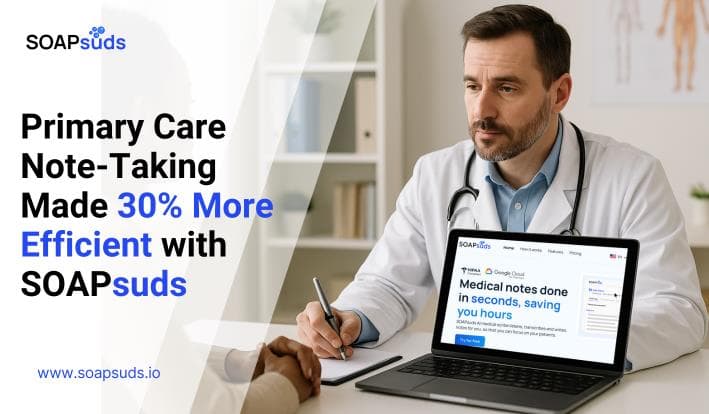Supporting Clinical Documentation for Home Health
SOAPsuds team
Published: 10/22/2025
SOAPsuds team
Published: 10/22/2025

Clinical documentation plays a key role in healthcare by recording patient data, history, diagnosis...
.png&w=750&q=75)
Documentation continues to take a large portion of a nurse’s shift, with research showing that

Building a motivated healthcare team can be difficult. After all, working in healthcare is demanding

AI medical scribes are quickly changing how healthcare providers manage documentation, simplify daily tasks...

Primary care doctors are saving time and improving care by documenting 30% quicker with SOAPsuds.

Healthcare scheduling goes beyond simple planning; it’s the backbone of running organized, well-supported teams
Clinical Notes
SOAP notes
DAP notes
AI medical notes